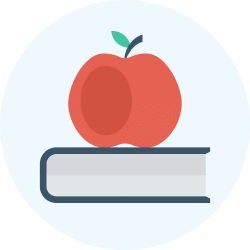Travel and Communicate Chapter Notes | Environmental Studies Class 2 ICSE PDF Download
| Table of contents |

|
| Introduction |

|
| Means of Transport |

|
| Special Vehicles |

|
| Means of Communication |

|
Introduction
We love to travel and talk to our friends and family! In this chapter, we learn about how we can go to different places using vehicles like cars, trains, and boats. These are called means of transport. We also learn how to share our ideas with others by speaking, writing, or using phones. This is called means of communication. Let’s explore how we travel and talk in fun and easy ways!
Means of Transport
We use different vehicles to travel on roads, rails, air, and water. These vehicles help us go to far places easily. They are called means of transport because they help us move.
Road Transport
- We use vehicles like cars, motorcycles, cycles, trucks, buses, rickshaws, and autorickshaws to travel on roads.
- Some vehicles like cars, motorcycles, trucks, and buses have engines.
- Engines need petrol or diesel to work and move the vehicle.
- Cycles and rickshaws do not have engines; we move them with our hands and legs.
Fun Fact
A cart is a vehicle with two or four wheels. Animals like oxen, camels, horses, and bullocks pull the cart. Some carts carry loads, like heavy things. Some carts carry people.
Rail Transport
- Trains move on rails to take us to different places.
- A train has an engine that runs on electricity, coal, or diesel.
- Passenger trains carry people from one place to another.
- Goods trains carry things like food, clothes, and other items.
Fun Fact
A person who travels in a train is called a passenger.
Water Transport
- We use boats, ships, steamers, and sailboats to travel on water.
- Boats are small and can be used in lakes, canals, or rivers. We row them with oars.
- Ships and steamers are big and carry heavy loads on the sea.
- Sailboats use sails to move with the wind on water.
Fun Fact
Submarines are used by soldiers to travel under water.
Air Transport
- We use aeroplanes and helicopters to travel in the air.
- They are the fastest way to travel to far places, even to other countries.
- We can reach far countries in a few hours using aeroplanes.
- Aeroplanes and helicopters also carry goods like food and clothes.
Special Vehicles
Some vehicles are used for special jobs to help people like:
- A fire engine carries tools and firefighters to put out fires.
- An ambulance takes sick or injured people to the hospital quickly.
- A cable car is pulled by a moving metal rope and carries passengers up and down a mountain.
- A hot-air balloon is a big balloon filled with hot air that rises in the sky.
- Hot-air balloons are used for fun, not for regular travel.
Grandma Says...
Know these special numbers. You can use them in case of an emergency.
- Police: 100
- Fire: 101
- Ambulance: 102
Means of Communication
- We share our ideas and thoughts with others using different ways.
- These ways are called means of communication.
- We can speak to others to share our ideas.
- We can write messages to tell others what we want to say:
- We can send written messages through a letter.
- We can send urgent messages through fax and email.
- We can talk to others using a telephone or mobile phone.
- A telephone is the quickest way to talk to someone far away.
- We can even send written messages through a mobile phone.
Fun Fact
- A traffic policeman uses his whistle and different signs to manage traffic on the road.
- A telephone where we have to put coins before using it is called a payphone.
|
102 docs|21 tests
|
FAQs on Travel and Communicate Chapter Notes - Environmental Studies Class 2 ICSE
| 1. What are the different means of transport mentioned in the article? |  |
| 2. What are special vehicles and how are they different from regular vehicles? |  |
| 3. How do we communicate while traveling? |  |
| 4. What are some fun facts about transport and communication? |  |
| 5. Why is it important to learn about transport and communication? |  |














